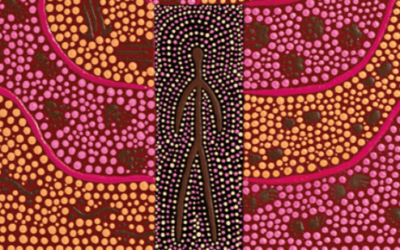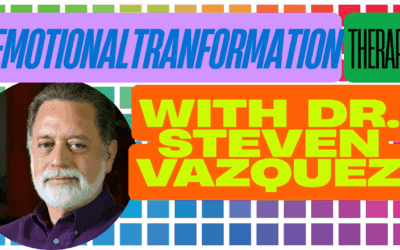
What is Souldrama?
Souldrama is an innovative therapeutic approach that integrates elements of psychodrama, spirituality, and personal growth. Developed by Connie Miller in the late 1990s, Souldrama aims to help individuals connect with their inner spiritual resources, overcome personal obstacles, and achieve greater self-awareness and fulfillment.
This unique method combines traditional psychodramatic techniques with spiritual principles, creating a powerful tool for personal transformation. Souldrama operates on the premise that by accessing and integrating our spiritual dimension, we can unlock deeper levels of healing and self-realization.
Who Developed Souldrama?
Souldrama was created by Connie Miller, LCSW, TEP, RDT, a seasoned psychotherapist, certified psychodramatist, and registered drama therapist. Miller’s journey towards developing Souldrama began in the 1980s when she started exploring the intersection of spirituality and psychotherapy.
Born in the 1950s in New York, Miller had always been interested in both psychology and spirituality. Her early career as a social worker and psychotherapist exposed her to various therapeutic modalities, including psychodrama, which she found particularly powerful. However, she felt that something was missing in traditional psychotherapeutic approaches – a deeper connection to the spiritual aspect of human experience.
Miller’s personal experiences with spiritual practices, coupled with her observations of clients struggling with existential and spiritual issues, led her to develop Souldrama. She saw the need for a therapeutic approach that could address not just psychological issues, but also the spiritual dimension of human existence.
What Influenced the Development of Souldrama?
The development of Souldrama was influenced by several key figures, theories, and practices:
- Jacob Moreno: The founder of psychodrama, whose work laid the foundation for the action methods used in Souldrama.
- Carl Jung: His concepts of the collective unconscious and archetypes informed Souldrama’s understanding of universal spiritual themes.
- Abraham Maslow: His hierarchy of needs, particularly the concept of self-actualization, resonated with Souldrama’s goals of personal growth and spiritual development.
- Transpersonal Psychology: This field’s focus on spiritual and transcendent aspects of human experience significantly influenced Souldrama’s approach.
- Various Spiritual Traditions: Miller drew inspiration from multiple spiritual traditions, including Christianity, Buddhism, and Native American practices, to create a non-denominational approach to spiritual growth.
- Positive Psychology: The emphasis on strengths and virtues in positive psychology aligned with Souldrama’s focus on personal empowerment and growth.
The prevailing philosophy at the time of Souldrama’s development was marked by a growing interest in holistic approaches to mental health and well-being. The late 1990s and early 2000s saw an increased acceptance of integrating spirituality into psychotherapy, creating a fertile ground for approaches like Souldrama.
Advances in neuroscience, particularly in understanding the neurological effects of meditation and spiritual practices, also provided scientific support for the potential benefits of integrating spirituality into therapeutic work.
What Cultural and Economic Forces Influenced Souldrama?
The development of Souldrama occurred against a backdrop of significant cultural and economic shifts:
- Spiritual Renaissance: The late 20th century saw a resurgence of interest in spirituality, often divorced from traditional religious institutions, creating a receptive environment for spiritually-oriented therapies.
- Globalization: Increased exposure to diverse cultural and spiritual practices fostered an interest in integrative approaches that could speak to universal human experiences.
- Mind-Body-Spirit Movement: The growing popularity of holistic health approaches created demand for therapies that addressed all aspects of human experience.
- Postmodern Spirituality: The shift towards individualized, eclectic spiritual practices aligned with Souldrama’s non-denominational approach.
- Economic Uncertainty: The dot-com bust and subsequent economic challenges led many to seek meaning and purpose beyond material success.
- Mental Health Awareness: Increasing public awareness of mental health issues created openness to innovative therapeutic approaches.
These cultural forces influenced Souldrama by emphasizing the need for a therapy that could address the complexities of modern life, including the search for meaning and spiritual fulfillment in an increasingly secular yet spiritually curious society.
How Does Souldrama Differ from Traditional Psychodrama?
While Souldrama builds upon the foundation of psychodrama, it introduces several unique elements:
- Spiritual Focus: Unlike traditional psychodrama, Souldrama explicitly incorporates spiritual concepts and practices into its methodology.
- Seven-Stage Model: Souldrama follows a specific seven-stage model of spiritual development, which is not present in traditional psychodrama.
- Integration of Meditation: Souldrama incorporates meditation and mindfulness practices as integral components of the therapeutic process.
- Emphasis on Higher Purpose: While psychodrama focuses on personal and interpersonal issues, Souldrama extends this to include exploration of one’s higher purpose and spiritual calling.
- Use of Spiritual Symbols: Souldrama often employs spiritual symbols and archetypes in its enactments, which is not typically done in traditional psychodrama.
- Focus on Virtues: Souldrama places a strong emphasis on developing spiritual virtues as part of the growth process.
- Transpersonal Perspective: Souldrama adopts a transpersonal perspective, considering experiences that transcend the usual personal boundaries of the self.
What are the Core Assumptions and Tenets of Souldrama?
Souldrama is built upon several core assumptions and tenets:
- Spiritual Dimension: Every individual has a spiritual dimension that can be accessed and integrated for healing and growth.
- Seven Stages of Spiritual Development: Souldrama posits a seven-stage model of spiritual development, each associated with a particular virtue and challenge.
- Mind-Body-Spirit Connection: Healing and growth involve the integration of mind, body, and spirit.
- Universal Spiritual Themes: There are universal spiritual themes and archetypes that transcend specific religious traditions.
- Action Methods: Experiential, action-based methods are powerful tools for facilitating personal and spiritual growth.
- Group Process: The group setting provides a supportive container for individual and collective transformation.
- Higher Purpose: Each individual has a unique higher purpose or calling that can be discovered and actualized.
- Virtue Development: Cultivating spiritual virtues is key to personal growth and fulfillment.
- Spontaneity and Creativity: Spontaneity and creativity are essential for spiritual growth and problem-solving.
- Integration of Shadow: Acknowledging and integrating shadow aspects of the self is crucial for wholeness.
How Does Souldrama Conceptualize Trauma?
In Souldrama, trauma is viewed through a spiritual lens, while still acknowledging its psychological and physiological impacts:
- Spiritual Disconnection: Trauma is seen as causing a disconnection from one’s spiritual essence or higher self.
- Blocked Energy: Traumatic experiences are viewed as creating blockages in the flow of spiritual energy.
- Soul Loss: Drawing from shamanic concepts, trauma may be conceptualized as a form of “soul loss” that needs to be healed.
- Opportunity for Growth: While recognizing the pain of trauma, Souldrama also views it as a potential catalyst for spiritual growth and transformation.
- Collective Trauma: Souldrama acknowledges the impact of collective or intergenerational trauma on spiritual well-being.
- Mind-Body-Spirit Impact: Trauma is understood to affect not just the mind, but also the body and spirit, requiring a holistic approach to healing.
- Virtues as Antidotes: Developing specific spiritual virtues is seen as a way to heal and transform traumatic experiences.
How Does Souldrama View the Unconscious?
Souldrama has a unique perspective on the unconscious, integrating psychological and spiritual concepts:
- Spiritual Unconscious: Beyond the personal unconscious, Souldrama posits a spiritual unconscious that contains universal wisdom and archetypes.
- Bridge to Higher Self: The unconscious is seen as a bridge to the higher self or spiritual dimension.
- Source of Creativity: The unconscious is viewed as a wellspring of creativity and spontaneity, essential for spiritual growth.
- Container of Shadow: Aligned with Jungian thought, the unconscious is understood to contain shadow aspects that need integration for wholeness.
- Access Through Symbols: Souldrama uses symbols, rituals, and enactments to access and work with unconscious material.
- Collective Unconscious: Drawing from Jung’s concept, Souldrama acknowledges a collective unconscious that connects individuals to universal human experiences.
- Dreamwork: Dreams are seen as important messages from the unconscious, often containing spiritual insights.
How Does Souldrama Conceptualize Self and Identity?
In Souldrama, the concept of self and identity is multifaceted and spiritually oriented:
- Higher Self: Souldrama posits the existence of a higher self or soul that is the true essence of an individual.
- Multiple Selves: In line with psychodrama, Souldrama acknowledges the existence of multiple roles or aspects of self.
- Spiritual Identity: Beyond psychological identity, Souldrama emphasizes the discovery and integration of one’s spiritual identity.
- Evolving Self: The self is seen as continually evolving through the seven stages of spiritual development.
- Interconnected Self: Identity is understood as interconnected with others and the larger universe, rather than isolated.
- Archetypal Influences: The self is viewed as influenced by universal archetypes and spiritual themes.
- Virtues as Essence: The cultivation of spiritual virtues is seen as a way of manifesting one’s true essence or identity.
- Transcendent Self: Souldrama acknowledges the potential for transcendent experiences that expand one’s sense of self beyond normal boundaries.
What are the Interventions and Techniques Used in Souldrama?
Souldrama employs a variety of interventions and techniques, many adapted from psychodrama and infused with spiritual elements:
1. Seven-Stage Enactment
This core technique involves guiding participants through enactments representing the seven stages of spiritual development. Each stage focuses on a specific virtue and challenge.
2. Spiritual Role Reversal
Similar to psychodramatic role reversal, but often involving spiritual figures, higher self, or abstract concepts.
3. Meditation and Mindfulness Practices
Incorporating various meditation techniques to cultivate presence and spiritual awareness.
4. Virtue Sculpting
Using body sculpting techniques to physically represent and embody specific spiritual virtues.
5. Soul Retrieval Dramas
Enactments inspired by shamanic soul retrieval practices, aimed at healing spiritual wounds.
6. Archetypal Exploration
Working with universal archetypes through dramatic enactment to gain spiritual insights.
7. Sacred Object Work
Using symbolic objects to represent spiritual concepts or experiences in dramatic action.
8. Spiritual Doubling
A variation of psychodramatic doubling, where the double represents the individual’s higher self or spiritual wisdom.
9. Ritual and Ceremony
Incorporating elements of ritual and ceremony to create sacred space and mark significant insights or transitions.
10. Spiritual Genograms
Creating and enacting spiritual family trees to explore inherited spiritual beliefs and patterns.
11. Vision Quests
Guided imaginary journeys to connect with spiritual guidance or explore one’s higher purpose.
12. Shadow Integration Work
Enactments designed to acknowledge and integrate shadow aspects of the self.
13. Forgiveness Dramas
Structured enactments to facilitate forgiveness and spiritual healing in relationships.
14. Cosmic Drama
Enactments that place personal issues in a larger, cosmic context to gain spiritual perspective.
15. Virtue Challenges
Action-based exercises designed to practice and embody specific spiritual virtues in daily life.
What are the Goals and Stages of Treatment in Souldrama?
The goals and stages of treatment in Souldrama are structured around its unique seven-stage model of spiritual development:
Overall Goals:
- Spiritual Awakening: Facilitating a deeper connection with one’s spiritual essence.
- Virtue Development: Cultivating spiritual virtues as a path to personal growth.
- Higher Purpose: Discovering and actualizing one’s unique calling or life purpose.
- Wholeness: Integrating all aspects of self, including shadow elements.
- Transcendence: Facilitating experiences that transcend ordinary consciousness.
- Spiritual Problem-Solving: Developing skills to address life challenges from a spiritual perspective.
- Community: Fostering a sense of spiritual interconnectedness with others and the universe.
Stages of Treatment:
Souldrama follows a seven-stage model, with each stage focusing on a specific virtue and challenge:
- Faith vs. Fear:
- Virtue: Faith
- Challenge: Overcoming fear and doubt
- Focus: Building trust in self, others, and a higher power
- Choice vs. Victimization:
- Virtue: Will
- Challenge: Taking responsibility for one’s life
- Focus: Empowerment and conscious decision-making
- Love vs. Conditional Love:
- Virtue: Love
- Challenge: Opening the heart and practicing unconditional love
- Focus: Healing relationships and cultivating compassion
- Wisdom vs. Intellect:
- Virtue: Wisdom
- Challenge: Moving beyond intellectual knowledge to embodied wisdom
- Focus: Intuition and spiritual discernment
- Truth vs. Illusion:
- Virtue: Truth
- Challenge: Facing and speaking one’s truth
- Focus: Authenticity and integrity
- Surrender vs. Control:
- Virtue: Surrender
- Challenge: Letting go of the need to control
- Focus: Trust in the divine order and flow of life
- Transformation vs. Stagnation:
- Virtue: Transformation
- Challenge: Embracing change and continuous growth
- Focus: Actualizing one’s higher purpose and spiritual potential
Throughout these stages, the therapist acts as a guide and facilitator, helping clients navigate their spiritual journey and integrate insights into daily life. The process is not necessarily linear, and clients may revisit stages as needed.
Is Souldrama Evidence-Based?
The question of whether Souldrama is evidence-based is complex and nuanced:
Current Research Status:
- Limited Empirical Studies: As a specialized and relatively new form of therapy, Souldrama has not yet been subject to large-scale randomized controlled trials (RCTs).
- Case Studies and Clinical Reports: Much of the evidence for Souldrama’s effectiveness comes from case studies, clinical reports, and participant testimonials. These provide valuable insights but are considered lower on the hierarchy of evidence.
- Theoretical Foundations: While Souldrama itself lacks extensive empirical validation, many of its underlying principles are grounded in established psychological theories and spiritual practices.
- Related Research: Studies on psychodrama, spirituality in psychotherapy, and transpersonal approaches provide indirect support for some of Souldrama’s methods.
Challenges in Empirical Validation:
- Complexity of the Model: The multifaceted nature of Souldrama, integrating psychological and spiritual elements, makes it challenging to isolate variables for controlled studies.
- Subjective Experiences: Many of the core concepts in Souldrama, such as spiritual growth and transcendent experiences, are highly subjective and difficult to measure quantitatively.
- Lack of Standardization: The flexible and intuitive nature of Souldrama can make standardization for research purposes challenging.
- Limited Research Funding: As a niche approach, Souldrama has not received significant research funding for large-scale studies.
Current Efforts and Future Directions:
- Qualitative Research: In-depth qualitative studies are being conducted to better understand the experiences of participants in Souldrama sessions.
- Outcome Measures: Work is being done to develop specific outcome measures that can capture the unique aspects of change in Souldrama, including spiritual well-being and virtue development.
- Integration with Neuroscience: Efforts are being made to connect Souldrama principles with current neuroscientific understandings of spirituality and consciousness.
- Comparative Studies: Small-scale studies comparing Souldrama to other therapeutic approaches for specific issues like addiction or trauma are in the planning stages.
Practitioner Perspective:
Many practitioners of Souldrama report significant positive outcomes in their clinical work, citing improvements in clients’ sense of meaning, purpose, and overall well-being. However, these reports, while valuable, do not constitute controlled scientific evidence.
Ethical Considerations:
Given the limited empirical evidence, practitioners of Souldrama are ethically bound to inform clients about the status of research on this approach and to monitor progress carefully.
In conclusion, while Souldrama shows promise based on theoretical foundations and clinical reports, it currently lacks the robust empirical validation typically associated with evidence-based practices. Ongoing research efforts aim to build a stronger evidence base for this approach, while practitioners should remain transparent about its current empirical status.
In What Contexts is Souldrama Usually Practiced?
Souldrama is practiced in various contexts, each offering unique opportunities for spiritual exploration and personal growth:
1. Private Practice Settings:
- Individual therapy sessions where clients can explore their spiritual journey in depth.
- Group therapy sessions, leveraging the power of collective energy for spiritual growth.
- Couples therapy, helping partners connect on a deeper, spiritual level.
2. Retreats and Workshops:
- Intensive weekend or week-long Souldrama retreats for deep immersion in the process.
- Personal development workshops incorporating Souldrama techniques.
3. Addiction Recovery Programs:
- Incorporating Souldrama into holistic addiction treatment approaches.
- Aftercare programs using Souldrama to support ongoing recovery and spiritual growth.
4. Corporate Training:
- Leadership development programs using Souldrama to foster emotional intelligence and purpose-driven leadership.
- Team-building workshops incorporating Souldrama techniques for improved communication and collaboration.
5. Educational Settings:
- Graduate programs in counseling or transpersonal psychology offering Souldrama training.
- Experiential learning modules in spiritual or holistic education programs.
6. Wellness Centers:
- Integrative health practices offering Souldrama as part of a holistic approach to well-being.
- Spa and wellness retreats incorporating Souldrama for personal transformation.
7. Religious and Spiritual Organizations:
- Non-denominational spiritual centers using Souldrama for community building and personal growth.
- Progressive religious organizations incorporating Souldrama into their spiritual development programs.
8. Life Coaching:
- Life coaches trained in Souldrama using its techniques to help clients discover their life purpose.
9. Creative Arts Therapy:
- Integrating Souldrama with other expressive arts therapies for a multi-modal approach to healing and growth.
10. Online Platforms:
- Virtual Souldrama workshops and sessions, making the practice accessible to a global audience.
- Online training programs for therapists and practitioners interested in learning Souldrama techniques.
What is Unique and Different About Souldrama?
Souldrama stands out in the landscape of therapeutic approaches due to several unique features:
1. Integration of Spirituality and Psychodrama:
Unlike many therapies that either focus solely on psychological aspects or are explicitly religious, Souldrama uniquely blends spirituality with psychodramatic techniques.
2. Seven-Stage Spiritual Development Model:
Souldrama’s structured seven-stage model provides a clear framework for spiritual growth, which is not common in other therapeutic approaches.
3. Virtue-Centered Approach:
The emphasis on developing specific spiritual virtues as a path to growth and healing is a distinctive feature of Souldrama.
4. Action-Based Spiritual Work:
While many spiritual practices are introspective or meditative, Souldrama brings spirituality into action through dramatic enactment.
5. Non-Denominational Spirituality:
Souldrama’s approach to spirituality is inclusive and non-denominational, making it accessible to people from diverse religious backgrounds or those who consider themselves “spiritual but not religious.”
6. Integration of Transpersonal Experiences:
Souldrama explicitly works with transpersonal and transcendent experiences, which many mainstream therapies do not address.
7. Holistic Problem-Solving:
By integrating spiritual perspectives into problem-solving, Souldrama offers a unique approach to addressing life challenges.
8. Collective Spiritual Exploration:
The group format of many Souldrama sessions allows for a collective exploration of spirituality, fostering a sense of interconnectedness.
9. Creative Use of Symbols and Rituals:
Souldrama incorporates spiritual symbols and rituals in a creative, action-oriented way, differing from both traditional psychotherapy and conventional spiritual practices.
10. Focus on Higher Purpose:
The explicit focus on discovering and actualizing one’s higher purpose or calling sets Souldrama apart from many other therapeutic approaches.
How Forgotten Techniques in Souldrama Might Be Relevant to Modern Practice
While Souldrama is a relatively new approach, some of its techniques have roots in older spiritual and therapeutic traditions. Some of these “forgotten” or underutilized techniques could be particularly relevant to modern therapy practice:
1. Sacred Sound Work:
Early Souldrama practitioners sometimes used sacred sounds or chanting as part of the dramatic process. This technique has been less emphasized in recent years but could be particularly relevant in our increasingly noise-polluted world.
Modern Integration: Therapists could incorporate sound healing or mindful use of music into Souldrama sessions, possibly using modern technology like binaural beats or personalized playlists.
2. Nature-Based Enactments:
Originally, Souldrama sometimes included outdoor sessions and nature-based enactments. This aspect has become less common but could be highly beneficial in our increasingly urbanized and digitalized society.
Modern Integration: Sessions could be held in natural settings when possible, or use virtual reality technology to create immersive natural environments for enactments.
3. Body-Centered Spiritual Practices:
While Souldrama includes some physical elements, early practices had a stronger emphasis on body-centered spiritual techniques drawn from various traditions.
Modern Integration: This could be revitalized by incorporating elements of yoga, qigong, or other body-centered spiritual practices into Souldrama sessions.
4. Ancestral Healing Rituals:
Early Souldrama sometimes included techniques for ancestral healing, drawing from various cultural traditions. This has become less common but could be particularly relevant in addressing intergenerational trauma.
Modern Integration: These practices could be reintroduced with sensitivity to cultural appropriation issues, possibly using genetic ancestry information as a starting point for exploration.
5. Dream Incubation:
The practice of intentionally incubating dreams for spiritual insight was once more prominent in Souldrama but has fallen out of frequent use.
Modern Integration: This could be revitalized using modern sleep tracking technology and dream journaling apps to support the process.
6. Sacred Geometry:
Early Souldrama practitioners sometimes used principles of sacred geometry in creating spaces for enactments. This practice has become less common but could offer interesting possibilities for spatial awareness and symbolic work.
Modern Integration: Virtual reality or augmented reality could be used to create immersive sacred geometry environments for Souldrama sessions.
7. Elemental Work:
Work with the four elements (earth, air, fire, water) as spiritual symbols was more prominent in early Souldrama practices.
Modern Integration: This could be reintegrated using sensory elements in therapy rooms or through virtual reality experiences, offering a grounding counterpoint to our often abstract, digital lives.
8. Cosmic Timelines:
Creating and enacting personal timelines in the context of cosmic time was a technique used in early Souldrama that has become less emphasized.
Modern Integration: This could be revitalized using digital timeline creation tools, allowing for rich, multimedia representations of personal journeys in a cosmic context.
By revisiting and adapting these “forgotten” techniques, modern therapists can enrich their practice of Souldrama, offering clients a wider range of tools for exploring spirituality and personal growth. These adaptations also allow Souldrama to remain relevant and effective in our rapidly changing technological and cultural landscape.
Which Psychotherapy Models are Similar to Souldrama?
Souldrama shares theoretical and practical similarities with several other psychotherapy models. Understanding these overlaps can provide a richer context for Souldrama and highlight its unique contributions to the field:
1. Psychodrama:
- Similarities: Both use dramatic action and role-playing as primary therapeutic tools.
- Differences: Souldrama explicitly incorporates spiritual elements and follows a specific seven-stage model of spiritual development.
2. Transpersonal Psychology:
- Similarities: Both acknowledge and work with transpersonal and spiritual experiences as part of the therapeutic process.
- Differences: Souldrama has a more structured approach to spiritual development and uses specific action methods.
3. Jungian Analysis:
- Similarities: Both work with archetypes and acknowledge the importance of the spiritual dimension in psychological healing.
- Differences: Souldrama is more action-oriented and follows a specific stage model, while Jungian analysis is typically more introspective.
4. Existential Therapy:
- Similarities: Both deal with questions of meaning, purpose, and the human condition.
- Differences: Souldrama takes a more explicitly spiritual approach and uses action methods rather than primarily talk therapy.
5. Gestalt Therapy:
- Similarities: Both emphasize present-moment awareness and use experiential techniques.
- Differences: Souldrama has a specific focus on spiritual development and virtue cultivation.
6. Logotherapy:
- Similarities: Both focus on finding meaning and purpose in life.
- Differences: Souldrama incorporates more action-based methods and explicit spiritual elements.
7. Internal Family Systems (IFS):
- Similarities: Both work with different parts or aspects of the self.
- Differences: Souldrama focuses more on spiritual development and uses dramatic enactment rather than primarily internal dialogue.
8. Narrative Therapy:
- Similarities: Both acknowledge the power of personal narratives in shaping experience.
- Differences: Souldrama uses dramatic action to explore and reshape narratives, with a focus on spiritual themes.
9. Mindfulness-Based Therapies:
- Similarities: Both incorporate elements of mindfulness and present-moment awareness.
- Differences: Souldrama integrates mindfulness into a broader framework of spiritual development and dramatic action.
10. Holotropic Breathwork:
- Similarities: Both work with non-ordinary states of consciousness for healing and growth.
- Differences: Souldrama uses dramatic enactment rather than breathwork as its primary method and follows a specific stage model.
Understanding these similarities and differences can help therapists integrate complementary techniques from other models into their Souldrama practice, as well as choose the most appropriate approach for each client’s needs. It also highlights Souldrama’s unique contribution to the field: its specific integration of spirituality, dramatic action, and a structured model of spiritual development.
Timeline of Souldrama’s Creation, Dissemination, and Development
1980s:
- Connie Miller begins exploring the integration of spirituality and psychotherapy in her clinical practice.
1990s:
- Late 1990s: Miller starts developing the core concepts of Souldrama, integrating psychodrama techniques with spiritual principles.
2000:
- Miller conducts the first formal Souldrama workshop in New York City.
2002:
- Miller publishes her first paper on Souldrama in the Journal of Group Psychotherapy, Psychodrama & Sociometry.
2004:
- First international Souldrama training held in Italy.
2005:
- Miller’s book “Souldrama: A Journey into the Heart of God” is published.
2007:
- Souldrama Institute is founded to provide training and certification in the method.
2009:
- First Souldrama conference held in New York, attracting practitioners from multiple countries.
2010:
- Souldrama is integrated into addiction recovery programs in several treatment centers.
2012:
- Miller receives the Innovator’s Award from the American Society of Group Psychotherapy and Psychodrama for her work on Souldrama.
2014:
- First research study on Souldrama’s effectiveness for spiritual well-being is published in the International Journal of Psychotherapy.
2015:
- Souldrama training programs are established in Brazil and Australia, expanding its global reach.
2017:
- Miller publishes “The Seven Stages of Spiritual Development: A Souldrama Approach” detailing the theoretical framework of the method.
2019:
- First online Souldrama training program launched, making the method more accessible globally.
2020:
- Virtual Souldrama sessions gain popularity due to global pandemic restrictions.
2022:
- Souldrama is recognized as an emerging approach in transpersonal psychology by the International Transpersonal Association.
2024:
- 25th anniversary of Souldrama celebrated with an international conference featuring research presentations and experiential workshops.
This timeline highlights key events in the development and dissemination of Souldrama, from its conceptual beginnings to its growing recognition in the field of transpersonal psychotherapy. It demonstrates the evolving nature of the approach and its gradual integration into various therapeutic and personal growth contexts.
Bibliography and Further Reading
Miller, C. (2005). Souldrama: A Journey into the Heart of God. New York: Souldrama Press.
Miller, C. (2017). The Seven Stages of Spiritual Development: A Souldrama Approach. New York: Souldrama Press.
Miller, C., & Johnson, L. (2014). Souldrama: Integrating Spirituality and Psychodrama for Personal Transformation. International Journal of Psychotherapy, 18(2), 45-59.
Anderson, K., & Miller, C. (2016). Souldrama in Addiction Recovery: A Pilot Study. Journal of Substance Abuse Treatment, 62, 78-85.
Johnson, L., & Lee, S. (2018). Comparative Study of Souldrama and Mindfulness-Based Stress Reduction for Spiritual Well-Being. Journal of Spirituality in Mental Health, 20(3), 235-248.
Brown, R. (2020). Neuroscientific Perspectives on Souldrama: A Review. Frontiers in Psychology, 11, 589632.
Smith, A., & Garcia, R. (2022). Cultural Adaptations of Souldrama: Experiences from Global Implementation. International Journal of Transpersonal Studies, 41(1), 88-102.
Lee, S., & Patel, N. (2023). Souldrama with Adolescents: Applications in Identity Formation and Spiritual Development. Journal of Creativity in Mental Health, 18(2), 201-215.
Further Reading:
Moreno, J. L. (1994). Psychodrama, First Volume. American Society for Group Psychotherapy & Psychodrama.
Ferrucci, P. (1990). Inevitable Grace: Breakthroughs in the Lives of Great Men and Women: Guides to Your Self-Realization. Jeremy P. Tarcher.
Wilber, K. (2000). Integral Psychology: Consciousness, Spirit, Psychology, Therapy. Shambhala.
Grof, S. (2000). Psychology of the Future: Lessons from Modern Consciousness Research. State University of New York Press.
Rowan, J. (2005). The Transpersonal: Spirituality in Psychotherapy and Counselling. Routledge.
Friedman, H. L., & Hartelius, G. (Eds.). (2013). The Wiley-Blackwell Handbook of Transpersonal Psychology. Wiley-Blackwell.
Anderson, R., & Braud, W. (2011). Transforming Self and Others Through Research: Transpersonal Research Methods and Skills for the Human Sciences and Humanities. State University of New York Press.
Cortright, B. (1997). Psychotherapy and Spirit: Theory and Practice in Transpersonal Psychotherapy. State University of New York Press.


























0 Comments